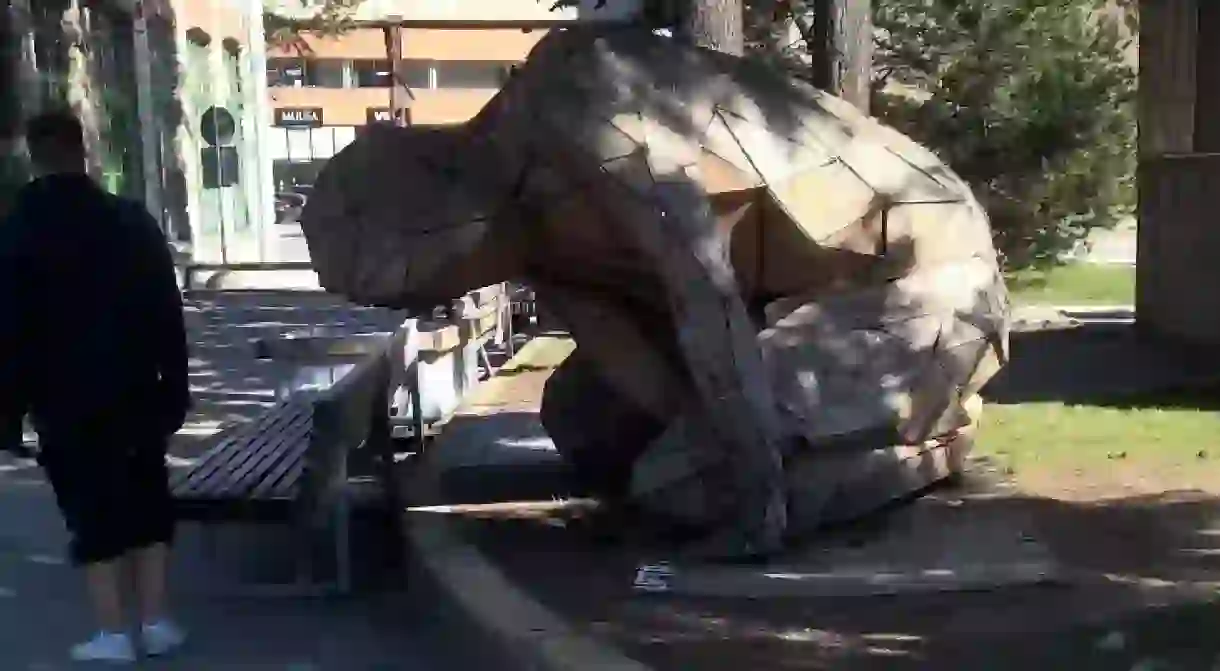A Walking Tour Of Kalamaja, Tallinn

A wander around the Kalamaja area of Tallinn in Estonia takes you past striking historic wooden houses, former industrial buildings reinvented as lively arts venues and numerous delightful cafés; not to mention the former Russian sea plane harbor that houses large scale maritime exhibits. Read on for The Culture Trip walking tour of the area’s best art, cafes and everything in between.
The Estonian capital Tallinn might be best known for its old town, but there are many other areas which are well worth a visit. Situated between the old town and the sea, the Kalamaja neighborhood was originally home to fishermen, but has since become a lively hub for artists and creatives.

Starting at the very east of the area, you’ll spot the huge ziggurat of Linnahall. A former Soviet era auditorium, the building is now out of use yet its steps, terraces and views over the Gulf of Finland make it a striking and popular attraction. Nearby is Kultuurikatel (also known as Cultural Cauldron), a 100-year-old former power station, which has been reinvented as a cultural center with three performing spaces.
Next door is the lively Contemporary Art Museum of Estonia, full of varied exhibitions of works by young Estonian artists. The museum is an artist-run, not-for-profit organization which started out as a squat in the abandoned office building of Tallinn’s former heating plant. Admission is free but the museum is only open Tuesday to Sunday, 12pm to 7pm. Head to the museum’s courtyard and you’ll find garage-turned-bookshop Lugemik, which specializes in art and design books.

A short walk away is the Estonian Design House, which sells high quality Estonian design products from furniture to fashion. Next door is the stylish Café Klaus offering brunch, coffee and more.
The main area of Kalamaja is notable for its three story houses, characteristic of Tallinn and built in the 1920s and 1930s at a time of great expansion in the city. The houses are striking due to their practical yet unique combination of wooden construction with central stone staircases.

Walking right across Kalamaja to the northwest you come across the Lennusadam Seaplane Harbour. Originally built 100 years ago on the orders of Tsar Nicholas II to house seaplanes, the huge space is now home to the Estonian Maritime Museum. The museum is distinguished by its innovative design, and visitors can behold a variety of maritime exhibitions from a complete submarine to small skiffs.
The seaplane harbor was built in 1840 adjacent to the huge Patarei sea fortress on the orders of Tsar Nicholas I, which occupies much of the coast. The fortress was formerly a symbol of Russian domination of Estonia, being used as a prison from 1920 to 2002, but is now open to the public. At the moment there are guided tours of the complex, but there are on-going discussions about putting the building to creative use.

Dotted around the Tallinn townhouses are some striking buildings, making the area well worth strolling through. There is the grand neo-classical portico of the Soviet era Salme Cultural Centre, the Suva Sock Factory (which is one of the first Functionalist buildings in Estonia and now the planned home of the Estonian Academy of Arts) and the grand 1928 Kalma Sauna complex, boasting a combination of neo-classical and Art Deco elements.

At the south end of Kalamaja is Telliskivi Creative City, a former industrial complex next to the railway line. It now houses an auditorium, three floors of studios, workshops and creative businesses, as well as a flea-market every Saturday. Dining options range from food trucks, Estonia’s first street food establishment Foody Allen, the aptly titled French restaurant Frenchy, high-quality Asian cuisine at Lendav Taldrik, and delicious, fragrant black bread at Muhu Bakery.













